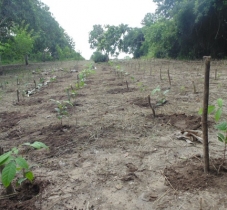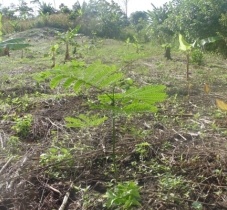Project description
In the region of San Martin, Peru, Reforest'Action is partnering with the Urku Centre to plant trees of various species in agroforestry in the Amazon rainforest.
THE CONTEXT OF THE PROJECT
Originally covered by tropical forests and wetlands, the San Martin region, located in northern Peru, in the high Amazon, has suffered rapid and massive deforestation since the end of the 20th century. This is mainly due to the construction of road connections as well as the development of agricultural programs encouraging the cultivation of rice, coffee and oil palm. Approximately 1.6 million hectares of primary forest have already been cut down over the last fifty years.
Since 2016, Reforest'Action has been involved in the field alongside the Urku Centre, an Amazonian research institute located in Tarapoto. The project aims to plant trees of various species in agroforestry in the Amazonian forest. These trees will bring many benefits to local communities.
OUR ACTIONS IN THE FIELD
Our reforestation project combines a great diversity of species selected according to the pedoclimatic conditions of the area and the needs of the local population.
In multiple localities in the San Martin region, the objective is to create agroforestry systems in order to develop the local economy and restore degraded forest ecosystems in the Amazon region.
The fruit trees (lemon, mango and cocoa trees) planted by local communities in their fields will enable them to produce fruit for their personal use or for local trade. Fast-growing species such as acacia, rubber tree, capirona and bolaïna will allow them to produce wood and rubber without having to go directly into the Amazonian forest. Agroforestry thus contributes to the diversification of farmers' incomes.
It also helps maintain and diversify agricultural production. High-yielding species such as mahogany cedar and bigleaf mahogany, two species classified as vulnerable by the IUCN Red List, will provide shade for the underlying crops and protect them from the wind. As nitrogen-fixing trees, they will also enrich cultivated soils by capturing essential plant elements from the atmosphere.
THE BENEFITS OF THE PROJECT
- Planted trees help fight global warming on a global scale thanks to the CO2 stored in the form of wood. Forests regulate temperature locally and generate rainfall that benefits crops in agricultural areas.
- By restoring patches of forest, the plantations will help develop the eroded biodiversity of the Amazonian region of San Martin. In particular, monkeys, frogs and turtles will be able to find new shelter within these ecosystems.
- Planting trees in agroforestry helps protect the underlying food crops from too much sunshine or heavy rainfall by creating shade during the dry season and protective cover during the rainy season.
- Trees planted in the fields of local producers allow them to harvest the fruits of their fields to improve their food security. Surplus crops can be sold at local markets to generate additional income.
- Managed sustainably by the local communities, the trees planted in agroforestry will eventually allow them to produce wood for their own use or for the generation of additional income through its sale.
- Some of the species planted have medicinal virtues sought after by local populations for self-consumption or sale.
- The local populations are sensitized to the protection of their environment and to the maintenance of the trees planted on the long term.






